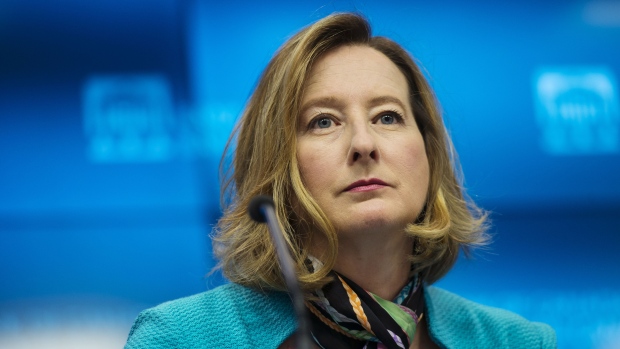Sep 6, 2018
Bank of Canada debated accelerated rate hikes: Wilkins
, Bloomberg News

The Bank of Canada’s top officials debated whether to accelerate the pace of potential interest rate hikes, before finally choosing to stick to their current “gradual” path.
In a speech Thursday outlining some of the deliberations from yesterday’s rate decision, Senior Deputy Governor Carolyn Wilkins said the discussion came up in the governing council’s deliberations because Canada’s economy is running near capacity and is at the stage of the business cycle where the focus turns to combating price increases.
The bank “discussed whether the gradual approach to raising rates that we have been taking over the past year remains appropriate,” Wilkins said, according to prepared remarks of a speech she’s giving in Regina. “It is a natural question to ask, given that the economy has been operating at potential for the past year and it is in this part of the cycle when interest rates typically rise to pre-empt a buildup in inflation pressures.”
The comments are a clear sign that Bank of Canada policy makers, led by Governor Stephen Poloz, are determined to bring rates back to normal levels, and are confident in the Canadian economy’s ability to cope with both higher borrowing costs and the mounting trade tensions.
Canada’s dollar reversed earlier losses after the text of the speech was released. It rose as much as 0.4 per cent to $1.3128 against the U.S. dollar at 2:30 p.m. Toronto time.
Upbeat
The speech provided an upbeat assessment of the country’s economic expansion, with Wilkins saying the economy was on “solid footing” with broad-based growth, running close to potential, driven by business investment and exports and households “adjusting well” to higher interest rates.
While the central bank yesterday held off from raising borrowing costs to see what happens with NAFTA negotiations, it indicated in its rate decision that it’s ready to continue hiking interest rates.
Ultimately, the central bank decided that “the gradual approach we have been following is still appropriate,” Wilkins said. She cited the belief that a recent spike in inflation will be temporary and not caused by excess demand. Officials also “still acknowledge” they may be underestimating how quickly the economy can grow without producing inflation and there remain worries about its sensitivity to interest rates given high debt levels.
NAFTA
Wilkins said the trade environment was “front and center” in this week’s decision. While the central bank has already incorporated negative effects of uncertainty and tariffs into its forecasts for business investment and exports, the impacts remain a major unknown. Negotiations are currently underway in Washington to revise the North American Free Trade Agreement, but it remains unclear whether Canada will join a deal the U.S. has forged with Mexico, or be left out.
“These estimates are highly uncertain and may need to be adjusted as we get more information about NAFTA negotiations and how businesses are adjusting their plans,” Wilkins said, adding that there is “some significant upside as well” if trade frictions dissipate.
She also cautioned that the implications on monetary policy of protectionism result in “complex trade-offs,” indicating the Bank of Canada may not have much scope to counter the negative effects on the economy since tariffs often lead to higher inflation.
“Protectionist measures can create risks to the upside for inflation, especially when the economy is operating near full capacity,” Wilkins said. “In weighing these trade-offs, you can be sure that the Governing Council will not lose sight of our primary mission.”
“There are a number of structural and other policies that are better suited than monetary policy to help manage what would be complex adjustments,” she said.

